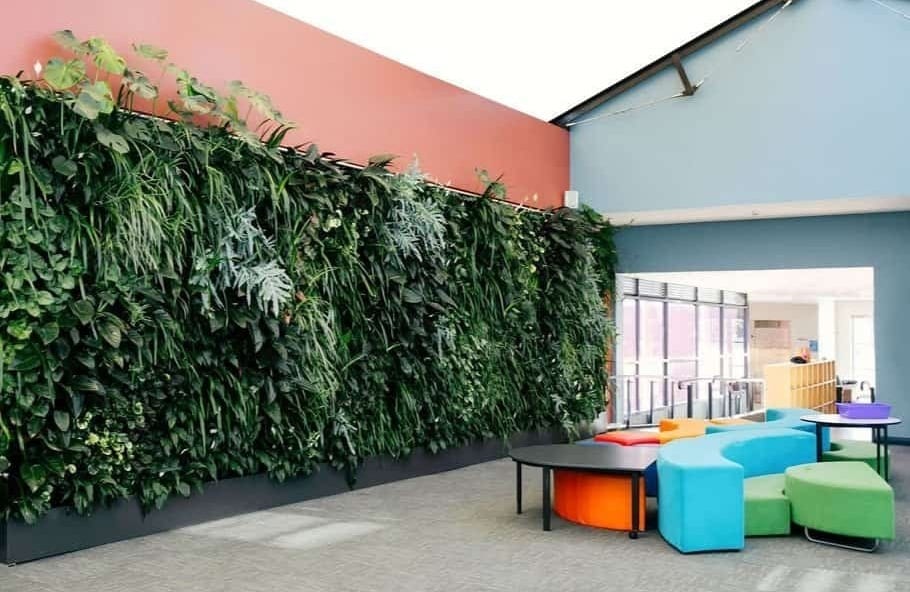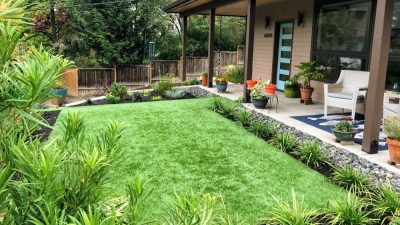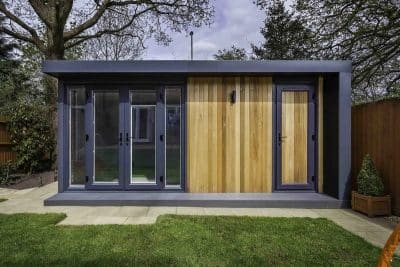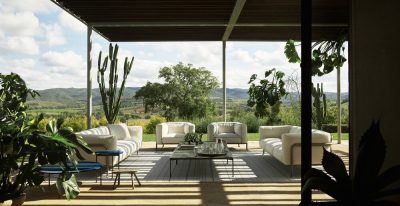
Creating a harmonious balance between nature and indoor spaces has become popular in modern design. Integrating natural elements within interiors enhances aesthetics and improves mental and physical well-being. Thoughtfully incorporating natural elements into interiors transforms commercial spaces, making them inviting, refreshing, and productive.
This concept resonates deeply with sustainable or biophilic design, an architectural approach that strengthens the connection between people and the natural world. By weaving in natural light, greenery, and earthy materials, these interiors become more than just functional spaces—they create an experience.
Natural Light as the Foundation
One of the simplest ways to bring the outdoors inside is to use abundant natural light. Large windows, skylights, and glass walls allow sunlight to flow freely into spaces, enhancing their vibrancy.
Natural light not only illuminates a room but also positively impacts mood and productivity. It helps regulate circadian rhythms, fostering better sleep and energy levels. In commercial spaces, such as offices or retail environments, this leads to happier and more engaged occupants.
For spaces without access to direct sunlight, creative solutions like light wells or reflective surfaces can amplify available light. These techniques mimic outdoor lighting conditions, creating a sense of openness and connection to the outside world.
Greenery for a Breath of Fresh Air
Plants play a vital role in bringing nature indoors. From potted plants to living walls, greenery can make any space feel alive.
Indoor plants not only beautify spaces but also improve air quality by reducing toxins and increasing oxygen levels. Their presence has been linked to lower stress levels and increased focus, making them ideal for commercial settings.
Choosing the right plants is key. Low-maintenance options like snake plants or succulents work well for busy spaces. For larger areas, incorporating vertical gardens or large potted trees can create a striking natural focal point.
Earthy Materials for Warmth and Texture
Using natural materials adds depth and warmth to interiors. Wood, stone, and clay can be incorporated into furniture, walls, or flooring to mimic the feel of outdoor environments. For instance, reclaimed wood adds a rustic charm, while stone elements exude durability and elegance. Clay tiles or earthenware décor items further enhance the organic appeal of a space.
Combining these materials with modern elements creates a balanced, timeless look. Additionally, using textiles like jute, cotton, or wool contributes to a cozy and natural ambiance. Layering these textures can make a commercial space feel welcoming and grounded, much like the outdoors.
Creating Visual Connections to Nature
Strategically placed windows and open layouts are effective in drawing the outdoors in. Large windows overlooking gardens or scenic views provide a seamless connection to nature. When such views aren’t available, biophilic design emphasizes creating visual cues that replicate natural settings.
Wall art depicting lush landscapes, nature-inspired patterns, or murals can evoke the feeling of being outdoors. Incorporating mirrors to reflect greenery or natural light is another subtle way to create a sense of space and connection. Lighting also plays a role in enhancing these connections. Opting for fixtures with organic shapes or warm tones can mimic the comforting glow of natural light.
The Role of Water Elements
Incorporating water features adds a soothing dimension to interiors. The sound of flowing water has a calming effect, reducing stress and improving focus. Features like indoor fountains, aquariums, or even small water bowls with floating candles can bring a sense of tranquility to a space.
In commercial environments, these elements not only enhance the atmosphere but also create memorable experiences for visitors. Maintaining simplicity is key when adding water features. Overly elaborate setups can feel overwhelming, while understated designs blend harmoniously with other natural elements.
Balancing Sustainability and Design
Sustainable design also aligns with sustainable practices by using eco-friendly materials and energy-efficient solutions. For instance, solar-powered lighting, energy-efficient windows, and reclaimed wood contribute to reducing the environmental impact of a space.
Sustainability doesn’t stop at materials. Encouraging recycling, composting, and responsible water use within interiors ensures that the connection to nature is not just visual but also practical. By prioritizing sustainability, commercial spaces will be able to align their design philosophy with broader environmental goals.
Enhancing Well-Being Through Thoughtful Interiors
Integrating natural elements isn’t just about aesthetics—it’s about creating environments that promote health and well-being. Research shows that exposure to nature, even indirectly, can reduce anxiety and improve cognitive function.
Incorporating greenery, light, and natural materials creates a multisensory experience. This holistic approach is especially beneficial in commercial spaces where occupants spend long hours. Thoughtful design can enhance creativity and productivity while fostering a sense of calm.
Sustainable design stands at the core of this approach, offering a structured way to bring the outdoors inside. By combining elements thoughtfully, interiors can achieve the perfect balance of functionality, beauty, and a connection to nature.
Bringing the outdoors inside is a design approach that focuses on integrating natural elements into interior spaces. Through the strategic use of natural light, greenery, materials, and sustainable practices, interiors can become sanctuaries that uplift and inspire. Biophilic design ensures these spaces are not only visually appealing but also beneficial for the environment and the people within them. By embracing this philosophy, commercial spaces can create a lasting impression, blending the beauty of the outdoors with the comfort of the indoors.








